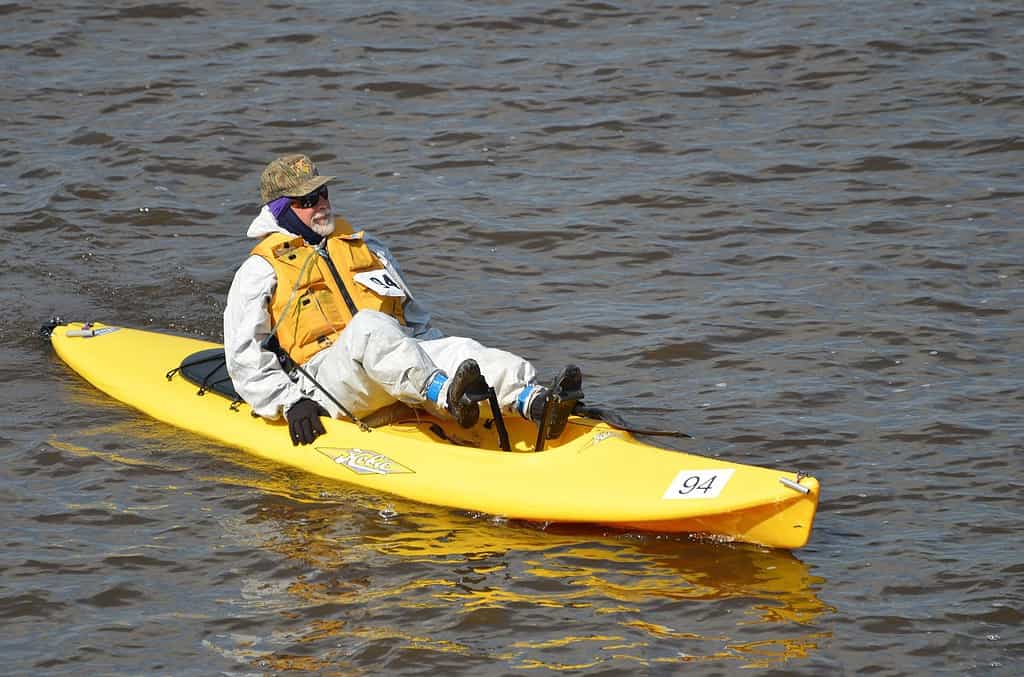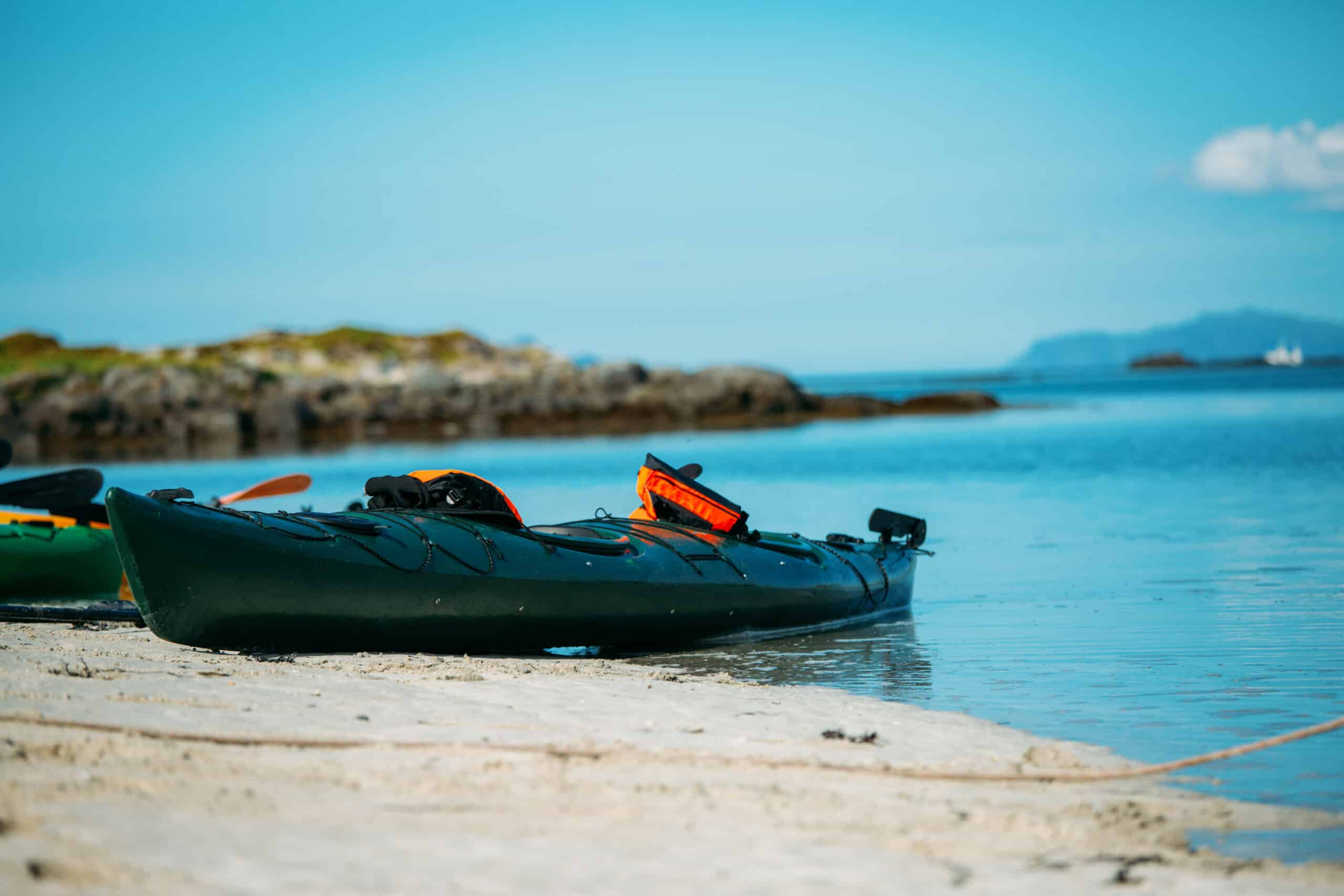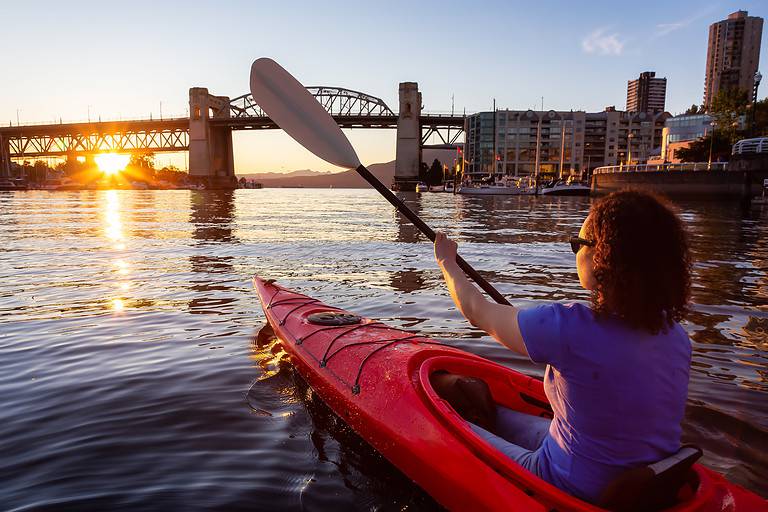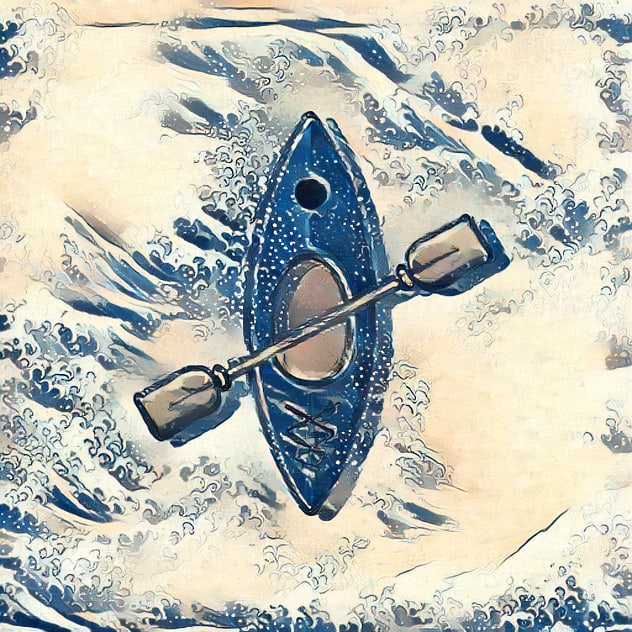Pros And Cons Of Pedal Kayaks: An In-Depth Look
Picture this: you’re gliding effortlessly across the water, the sun’s warm rays kissing your skin as you navigate serene landscapes. The gentle rhythm of your legs propels you forward in your pedal kayaks, leaving your hands free to fish, take photos, or soak in the beauty around you. This is the magic of pedal kayaks.
Welcome to our in-depth exploration of the pros and cons of pedal kayaks. As avid outdoor enthusiasts, we understand the desire for adventure and connection with nature. We know that feeling of belonging when we find a community that shares our passion.
This article will delve into every aspect of pedal kayaks – from maneuverability and control to speed and efficiency. We’ll discuss comfort and ergonomics, maintenance and durability, and the learning curve and skill level required to master these incredible vessels.
So join us on this journey as we uncover everything about pedal kayaks – their advantages, drawbacks, and everything. Let’s dive in together and discover why these human-powered crafts are revolutionizing how we explore our beloved waterways.
Key Takeaways
- Pedal kayaks offer unmatched maneuverability and control, making navigating through tight spaces and obstacles easy.
- The hands-free experience of pedal kayaks provides precise navigation and stability, even in strong currents or windy conditions.
- Pedal kayaks have a minimal learning curve and are accessible to beginners, eliminating the need for complex paddling techniques.
- Pedal kayaks offer increased storage capacity and legroom, providing a comfortable and convenient kayaking experience.
Maneuverability and Control of the Pedal Kayaks
You’ll feel excitement as you effortlessly navigate through tight spaces and maneuver around obstacles with the incredible control offered by pedal kayaks. Pedal kayak maneuverability is unmatched, allowing you to glide smoothly through narrow channels and shallow waters that traditional kayaks may struggle to reach. This level of agility allows you to easily explore hidden coves, winding rivers, and intricate mangrove forests.
The pedal kayak control is exceptional, providing you with a hands-free experience that allows for precise navigation. With a simple push or pull of the pedals, you can quickly change direction or adjust your speed without compromising stability. This level of control is particularly beneficial when facing solid currents or windy conditions, as it enables you to maintain stability while effortlessly propelling forward.

Furthermore, the intuitive design of pedal kayaks ensures that even beginners can swiftly grasp the art of maneuvering these watercraft. The learning curve is minimal as compared to traditional paddle kayaks since there’s no need to master complex paddling techniques. Whether you’re an experienced kayaker looking for a new challenge or a novice seeking adventure on the water, pedal kayaks offer an accessible means to hone your skills while enjoying nature’s wonders.
Transitioning into the subsequent section about ‘speed and efficiency,’ we find that pedal kayaks provide exceptional maneuverability and control and excel in speed and efficiency on the water.
Speed and Efficiency
Regarding speed and efficiency, pedal kayaks offer a smooth and swift experience. These innovative watercraft are designed to maximize speed and energy efficiency, allowing paddlers to cover more distance with less effort. Pedal kayaks can reach impressive top speeds, making them an excellent choice for those who enjoy gliding through the water at high velocities.
One of the critical advantages of pedal kayaks in terms of speed is that they allow for continuous propulsion. Unlike traditional kayaks, where you must paddle manually, pedal kayaks utilize a rotating pedal system that enables a constant forward motion. This means you can maintain your speed without pausing or exerting extra effort on each stroke.
In addition to their impressive top speeds, pedal kayaks are also known for their energy efficiency. The pedaling motion engages larger muscle groups in your legs, allowing you to generate more power with each stroke than just your arms with a paddle. This efficient use of body mechanics translates into less fatigue and longer endurance on the water.
Furthermore, many modern pedal kayak models feature sleek hull designs that minimize drag and improve overall performance. These streamlined shapes help reduce resistance against the water, allowing you to cut through waves effortlessly while maintaining your top speed.
As we transition into discussing comfort and ergonomics in the next section, it’s worth noting that pedal kayaks are fast and efficient and provide a comfortable paddling experience.
Comfort and Ergonomics
Regarding comfort and ergonomics in pedal kayaks, there are several key points to consider. First, adjustable seats and footrests allow for a personalized fit, ensuring maximum comfort during long hours on the water. Pedal kayaks also offer more legroom and space for gear than traditional paddle kayaks, allowing for a more relaxed paddling experience. Lastly, using pedals reduces strain on the back and arms, making navigating through various water conditions easier without sacrificing comfort or efficiency.
Adjustable seats and footrests
Feel the comfort of a pedal kayak as you effortlessly glide through the water, with adjustable seats and footrests that mold to your body like a second skin. The benefits of adjustable seats and footrests in pedal kayaks are numerous. Firstly, they allow customized positioning, ensuring optimal posture and reducing strain on your back and legs during long trips. Secondly, they enhance stability by providing a snug fit, allowing you to maintain balance even in rough waters. Lastly, properly adjusting the seats and footrests can significantly improve performance by maximizing power transfer from your legs to the pedals.
To illustrate the importance of proper seat and footrest adjustment, consider this table:
| Benefit | Drawback |
| Enhanced comfort | Limited adjustability |
| Improved stability | Potential for misalignment |
| Optimal performance | Added weight |
Adjusting the seats and footrests correctly is crucial to reap these benefits without drawbacks. Now let’s explore another advantage of pedal kayaks: more legroom and space for gear.
More legroom and space for gear
Imagine how comfortable and convenient your kayaking experience would be with the extra legroom and ample space for all your gear. Pedal kayaks offer increased storage capacity, allowing you to bring along everything you need for a day on the water. Whether it’s fishing equipment, camping gear, snacks and drinks, you’ll have plenty of room to store it all. This enhanced storage capability adds convenience and ensures that your essentials are within easy reach whenever needed.
Additionally, pedal kayaks provide more legroom compared to traditional paddle-powered kayaks. This means that even taller individuals can stretch their legs and paddle without feeling cramped or restricted. The added space allows for a more comfortable and relaxing ride, giving you the freedom to enjoy your time on the water without any discomfort.
Furthermore, pedal kayaks offer enhanced stability due to their design and weight distribution. This makes them perfect for fishing or photography enthusiasts who require a stable platform for steady shots. With improved balance and stability, you can confidently maneuver through different water conditions without worrying about tipping over.
With increased storage capacity and enhanced stability provided by pedal kayaks, your kayaking adventures will be elevated to new heights of comfort and convenience. In the next section about ‘reduced strain on back and arms,’ we will explore how these innovative vessels can help alleviate common paddling-related issues while enhancing your overall water experience.
Reduced strain on back and arms
With the reduced strain on your back and arms, you can enjoy longer kayaking trips without the discomfort typically associated with traditional paddle-powered kayaks. Pedal kayaks provide a more ergonomic paddling experience, allowing you to use your legs instead of relying solely on upper body strength. This reduces the risk of back and arm injuries and improves cardiovascular health by engaging larger muscle groups. Pedal kayaks also offer increased stability, making it easier to maintain balance while navigating various water conditions. Whether you’re exploring calm lakes or tackling rougher waters, the stability of a pedal kayak provides added confidence and peace of mind. Furthermore, the extra legroom in these kayaks allows for better comfort during extended trips and opens up more space for gear storage. With improved cardiovascular health and increased stability, pedal kayaks offer an enhanced kayaking experience that is both enjoyable and beneficial for long-term use.
When it comes to maintenance and durability…
Maintenance and Durability
To properly maintain your pedal kayak and ensure its durability, you must regularly clean and inspect all components for any signs of wear or damage. This extends your kayak’s lifespan and helps prevent any potentially costly repairs down the line. Regular maintenance is essential to keep your pedal kayak in top shape.
One aspect to consider when it comes to maintenance costs is the material of your pedal kayak. Different materials require different levels of care. For example, kayaks made from rotomolded polyethylene are generally more durable and resistant to damage than those made from fiberglass. However, fiberglass kayaks tend to be lighter and faster on the water. It’s important to weigh these factors when making a decision.
In addition to regular cleaning, inspecting all components of your pedal kayak for any signs of wear or damage is crucial. This includes checking the pedals, drive system, rudder, and hull for any cracks or loose parts. By catching these issues early on, you can address them before they become major problems.
Regarding durability, pedal kayaks have come a long way in recent years. Manufacturers have improved their designs and construction methods to make them more resistant to wear and tear. However, handling your kayak with care is still important, and avoiding dragging it across rough surfaces or exposing it to extreme temperatures.
As we transition into discussing the learning curve and skill level required for using a pedal kayak effectively, it’s worth noting that regular maintenance also ensures optimal performance on the water. By keeping all components in good condition, you’ll have more confidence in maneuvering your kayak through various conditions without worrying about mechanical failures or malfunctions impacting your experience on the water.
Learning Curve and Skill Level
Is it possible to become a skilled pedal kayak user without extensive experience? The answer is yes, but developing the necessary skills requires time and effort. Learning to maneuver a pedal kayak efficiently and effectively requires learning techniques and practicing them consistently. While some may find the learning curve steep, dedication and practice make anyone proficient in operating a pedal kayak.
One of the first steps in becoming skilled at using a pedal kayak is understanding its operating mechanics. This includes familiarizing oneself with the pedals, rudder controls, and steering mechanisms. Once these basics are understood, navigating through various water conditions becomes easier.
Skill development in pedal kayaking also involves mastering different paddling techniques. These techniques include forward propulsion, reverse propulsion, turning maneuvers, and stopping effectively. Each technique requires coordination between leg movements on the pedals and adjustments made on the rudder controls.
Regular practice is essential to improve skill levels in a pedal kayak. Starting with calm waters and gradually progressing to more challenging conditions helps build confidence and experience. It is important to remember that everyone learns at their own pace, so patience is key during this learning process.
Additionally, seeking guidance from experienced pedal kayak users or taking professional lessons can significantly accelerate skill development. They can provide valuable tips on technique refinement and offer insights into advanced maneuvers.
While a learning curve may be involved in becoming proficient at using a pedal kayak, it is achievable with dedication and practice. By mastering various learning techniques and continuously developing skills through consistent practice, anyone can become a skilled user of this type of kayak. So don’t be discouraged by initial difficulties – embrace the challenge! With time and effort invested into honing your abilities on a pedal kayak, you’ll enjoy all the benefits this unique watercraft offers.
Frequently Asked Questions
Can pedal kayaks be used in rough waters or strong currents?
Yes, pedal kayaks can be used in rough waters or strong currents. While these conditions pose challenges, the benefits of pedal propulsion make it possible to navigate through them. Using both hands for stability and control allows for better handling in turbulent waters. The efficient and powerful pedal system also enables us to maintain speed and maneuverability, even against strong currents. With experience and proper technique, pedal kayaks are a reliable choice for tackling rough water conditions.
Are pedal kayaks suitable for fishing or just recreational paddling?
Pedal kayaks are versatile and suitable for both fishing and recreational paddling. Regarding fishing, pedal kayaks provide a hands-free experience, allowing you to focus on your fishing techniques without the hassle of constantly paddling. On the other hand, for those looking for leisurely paddling experiences, pedal kayaks offer the benefits of convenience and ease of use. Whether you’re angling or enjoying the water, pedal kayaks have you covered!
How easy is it to transport and store a pedal kayak?
Transporting and storing a pedal kayak can present some challenges, but solutions are available. Regarding transportation, the size and weight of the kayak may require a trailer or roof rack. Additionally, securing the kayak properly is crucial to prevent damage during transit. As for storage, finding enough space can be tricky, but wall-mounted racks or dedicated storage sheds can help keep your pedal kayak safe and out of the way when not in use.
Are there any specific safety concerns or precautions to remember while using a pedal kayak?
Regarding safety concerns, while using a pedal kayak, there are a few essential tips to remember. First, always wear a life jacket and ensure it is properly fastened. Additionally, be aware of your surroundings and avoid areas with strong currents or rough waters. Regular maintenance is also crucial for safety, such as checking the pedals and cables for any signs of wear and tear. By following these safety tips and maintenance recommendations, you can enjoy your pedal kayak experience with peace of mind.
Can pedal kayaks be used in both freshwater and saltwater environments?
Pedal kayaks can indeed be used in both freshwater and saltwater environments. They perform well in both settings, allowing for easy maneuverability and navigation. However, it is important to note that using a pedal kayak in saltwater requires additional maintenance and care due to the corrosive nature of saltwater. It is crucial to rinse the kayak thoroughly after each use in saltwater and regularly check for any signs of corrosion or damage. Proper maintenance will ensure longevity and optimal performance in any environment.
Conclusion
After examining the pros and cons of pedal kayaks, it is clear that these innovative watercraft offer many advantages. The maneuverability and control provided by pedal kayaks allow for effortless navigation in tight spaces. Their impressive speed and efficiency make them ideal for long-distance adventures. Furthermore, the comfort and ergonomic design ensure a pleasant experience on the water. While maintenance and durability may require some attention, the learning curve is easily overcome with practice. In conclusion, pedal kayaks are an exceptional choice for avid paddlers seeking a dynamic and exhilarating journey on the open waters, propelling them to new horizons with each stroke.






